23 Aug 2021
Forty Hall Summer Dig - Day 1
After a 12-month hiatus we're very pleased to be back in Forty Hall for our annual dig on the site of Elsyng Tudor Palace. Last year due to the pandemic we were forced to cancel the planned excavation for the first time since 2004, so we've been itching to knock the rust off our trowels and get back into the hunt for the inner gatehouse of the palace.
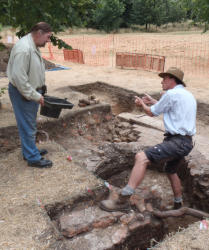
Over the last few years we've been exploring a complex of multi-phased buildings which define the southern edge of the palace's outer courtyard, beginning with a large rectangular building which we believe to be a barn, and leading into an adjacent complex of rooms containing a sequence of multi-phased brick floors and furnaces, one of which featured in Channel 5's series "Digging up Britain's Past".
We believe the furnaces were part of the palace's boiling house - a department within the royal kitchens - with the barn perhaps serving as a storage area for them and other departments of the kitchens.
Since uncovering the barn, we've been hard at work investigating contemporary accounts and other documents relating to the palace, and we were excited to find documentary evidence backing up the archaeology in household accounts dating from July 1540, shortly after Henry VIII acquired the palace for his new son Edward. The accounts mention a "greate longe barn" located in the outer court, and describe it as joining onto a gatehouse.
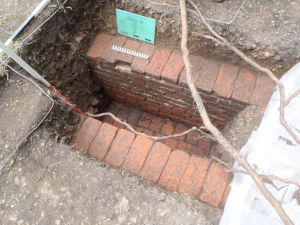
Assuming our barn to be the same structure, it would make sense if the north end of it adjoined the inner gatehouse, since the northern end of the building we found would be approximately where we think the outer and inner courtyards meet.
Testing this hypothesis is the goal of this year's dig, which will see us excavate in the area adjacent to the northern end of the barn within Forty Hall's lime tree avenue, primarily in search of evidence of the inner gatehouse.
At the same time we'll also be looking for the continuation of a straight sided drain or water conduit we discovered nearby in 2018. This feature seems to be heading in the direction of where the gatehouse may be, and so may be connected to it in some way, possibly even supplying water to a moat in front of it.
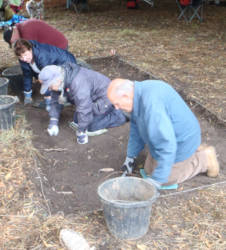
In any case we'd like to know where the water conduit goes, so this year we have opened two trenches - one to find more of the conduit and the second to hopefully find evidence of the gatehouse.
As ususal for a first day on site, we didn't do a great deal of digging, spending most of the morning setting up the site fence and laying out trenches one and two.
Trench one is actually laid out to be adjacent to if not actually intersecting a trench we opened late in the 2019 dig (how long ago that seems!) - but were forced to abandon due to record breaking summer temperatures followed by unrelenting monsoons.
We got as far as removing topsoil from this trench to reveal a layer of dense gravel and occasional rubble fragments.
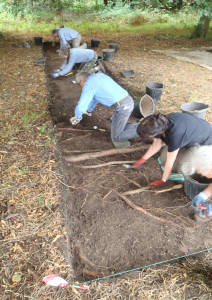
Trench two is a similar story - located seven metres further north along the lime tree avenue, it is a 10 by 1.5 metre trench located where we hope is the most likely place for the inner gatehouse.
We havent quite finished removing topsoil from all of the trench yet but in the areas that we have, it seems to be coming onto a similar context as trench one, of compacted gravel and occasional rubble.
Since the only context we removed today was topsoil there weren't very many interesting finds although we did find a few small stoneware pottery fragments most likely mixed into the topsoil by tree root action.
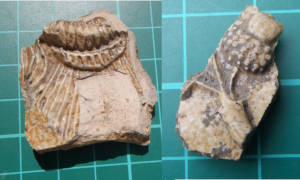
Perhaps the best two were a fragment of Frechen Bartmann also known as a Bellarmine Jug - so called due to the smiling bearded face stamped on the neck which supposedly resembled a Cardinal Bellarmine, and a fragment of a distinctive type of stoneware drinking vessel, made in Cologne - this one decorated with oak leaves and acorns. In previous years digging in and near the barn we have found large quantities of elaborately decorated stoneware vessels, so hopefully this is a sign of things to come!